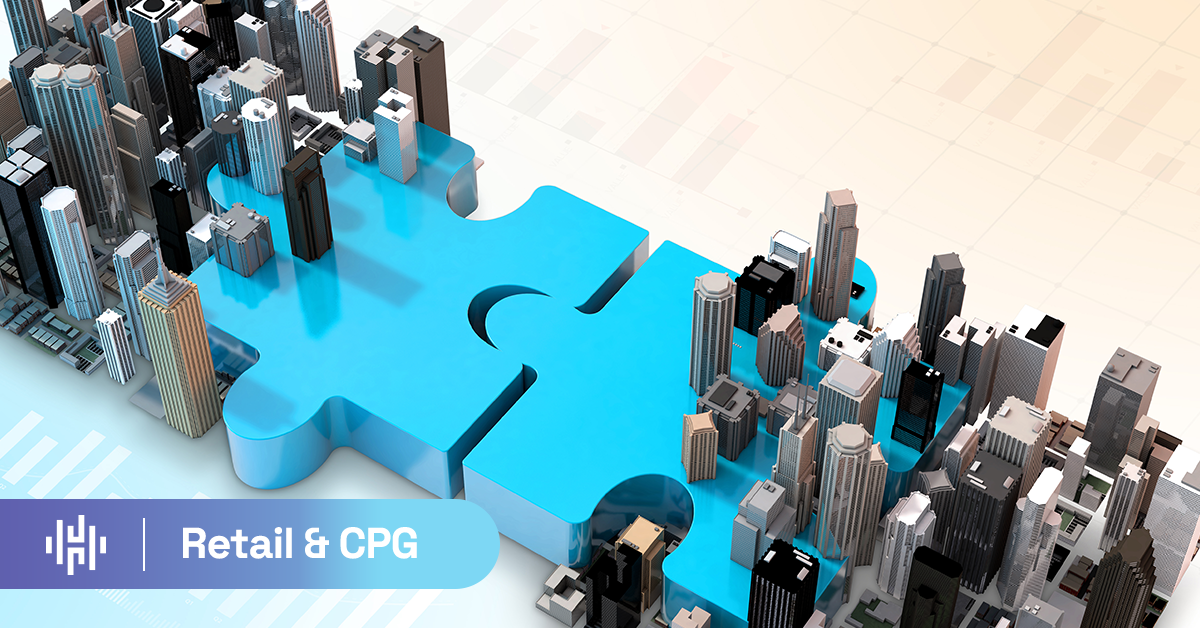When we talk about making business more data-driven, we aren’t talking about simply knowing what has happened or why. We’re talking about knowing what to do.
Retailers today are swimming in historical data. So much so that it may be more accurate to say they’re sinking in it. Sales, inventory, customer behavior, supply chain disruptions—the signals are everywhere. But making sense of those signals is another thing entirely.
More than just reporting on what happened (descriptive) or even what might happen next (predictive), retail prescriptive analytics recommends what to do—the specific actions to optimize outcomes across merchandising, supply chain, pricing, promotions, and customer engagement.
In a word, it is the process that allows retail data leaders to act on all that data.

What is Retail Prescriptive Analytics?
Historically, data analytics has served mostly descriptive and prescriptive functions—either parsing past trends or forecasting future outcomes based on recorded patterns.
Prescriptive analytics breaks that mold by recommending specific actions to drive better outcomes. It does this by combining a range of techniques including optimization algorithms, machine learning, and scenario modeling.
In retail, prescriptive analytics translates to data-driven, proactive decisions, such as:
- Automatically reordering the optimal amount of inventory.
- Timing and scaling discounts for maximum margin impact.
- Aligning store staffing to demand forecasts.
- Prioritizing marketing campaigns with the highest projected ROI.
Why Prescriptive Analytics Matters in Retail
Retail is a fast-moving, margin-sensitive industry. Every decision, from product assortment to pricing strategy, can significantly impact profitability.
Prescriptive analytics enables smarter, faster decisions by removing guesswork and leveraging data-driven logic. It narrows the gap between asking “What does the data say?” and understanding “What should we do about it?”
To illustrate, here are some of the most impactful ways prescriptive analytics might transform your retail decision-making:
- Inventory Optimization: Reduce stockouts and overstock by aligning demand forecasts with supply chain constraints.
- Dynamic Pricing: Adjust prices in real-time based on demand, competition, and customer behavior to maximize revenue.
- Personalized Promotions: Tailor offers at the individual customer level, improving conversion rates and customer satisfaction.
- Staffing Efficiency: Optimize employee schedules based on foot traffic predictions, peak hours, and task prioritization.
- Omnichannel Strategy Alignment: Coordinate decisions across online, in-store, and mobile channels to provide a seamless experience.
Getting Started with Prescriptive Analytics
Adopting retail prescriptive analytics doesn’t require a massive transformation on day one—but it does require a strategic, data-driven foundation. For organizations looking to move beyond reports and dashboards into action-oriented insights, here’s a practical roadmap to get started:
- Consolidate Clean Data: The success of any analytics initiative hinges on the quality and accessibility of your data. Start by integrating core data sources—like POS systems, ERP, CRM, and e-commerce platforms—into a centralized, reliable environment. Modern cloud platforms such as Snowflake make this process more seamless by supporting near-infinite scalability and real-time data sharing. Clean, unified data ensures your models produce accurate, trustworthy recommendations.
- Define Clear Use Cases: Don’t try to optimize everything at once. Identify specific, high-impact areas where prescriptive analytics can immediately add value. Common retail priorities include demand forecasting for inventory planning, dynamic pricing adjustments, or customer segmentation for personalized promotions. Well-defined use cases help ensure early wins and stakeholder buy-in.
- Choose the Right Tools: The right technology stack can make or break your initiative. Once more, Snowflake offers a strong backbone for scalable, cloud-native analytics with built-in support for machine learning, real-time data ingestion, and secure data collaboration. Paired with modern BI tools and AI tooling that operates where your data lives, your team can move from insights to intelligent action with speed and confidence.
- Pilot, Learn, Scale: Start with a controlled pilot to test hypotheses and validate the impact of your models. Measure outcomes carefully, whether that looks like increased sales lift, reduced inventory carrying costs, or improved staffing efficiency. Use those learnings to iterate, refine, and prepare for broader rollouts across departments or regions.
By following this phased approach, retail teams can reduce risk, build confidence in data-driven decisions, and steadily unlock value from prescriptive analytics.

Start Your Prescriptive Analytics Journey with Hakkōda
As customer expectations grow and competition intensifies, the ability to make data-backed decisions in real-time is already separating industry leaders from the rest of the pack.
At Hakkoda, we help retail organizations accelerate the journey to unlock prescriptive capabilities with industry-tailored Snowflake solutions and modern data stack consulting.
From data consolidation to advanced analytics use case delivery, our team brings expertise from across the modern data stack to ensure your business puts all that data to work.
Want to move faster with prescriptive analytics? Let’s build it together.




